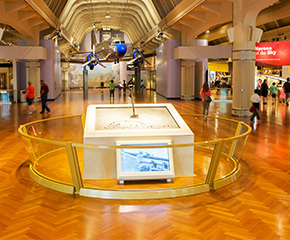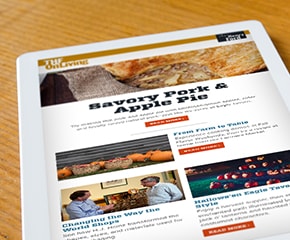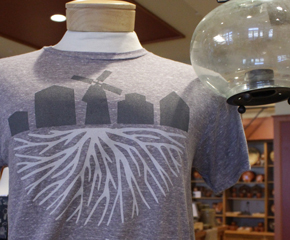
Creating Our Campus
Creating Greenfield Village
Ford’s historic village was to be organized around a village green, to include a courthouse, town hall, church, general store, tavern, and school. Homes were installed along a road beyond the green. Industrial buildings, such as a carding mill, sawmill, and gristmill, were made operational. A centerpiece of the Village was the re-creation of the Menlo Park, New Jersey, laboratory complex where Thomas Edison had invented his electric lighting system.
When we are through, we shall have reproduced American life as lived; and that, I think, is the best way of preserving at least a part of our history and tradition.
 Henry Ford
Henry Ford
Henry Ford engaged Ford Motor Company draftsman Edward J. Cutler to draw up plans. The first buildings began arriving in 1928. Laborers dug foundations, reconstructed buildings, cleared trees, laid out roads, and hauled supplies through muddy fields. Some buildings were designed right in the Village, at Ford’s request.
Building the Museum
While Cutler labored in the muddy fields of Greenfield Village, architect Robert O. Derrick was designing a large indoor museum adjacent to the historical village to house the objects Ford had collected. Derrick suggested that the façade should resemble Independence Hall and related buildings of Philadelphia, with a large “Exhibition Hall” in back.
Since Henry Ford had rejected the notion of storage rooms, nearly everything had to be exhibited out in the open. The twelve-acre museum contained a glorious assemblage of stuff. To Ford, that assemblage represented the evolution of technological progress.
For nearly a decade after the museum officially opened to the public in 1933, visitors found it a work in progress. The exhibits would not be completed until the early 1940s.
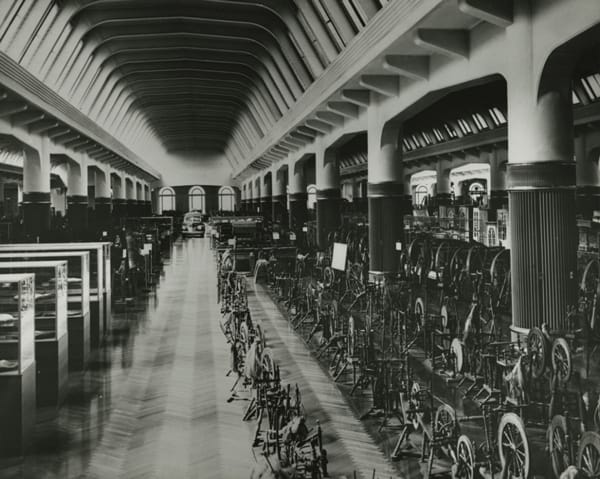
Light’s Golden Jubilee
Henry Ford decided on October 21, 1929, as the dedication date for his new museum and village—marking the fiftieth anniversary of Thomas Edison’s first successful experiment with a suitable approach to manufacturing an incandescent lamp.
The night of the “Light’s Golden Jubilee” celebration, crowds cheered as President Hoover, Edison, and Ford ceremoniously arrived in a train pulled by an 1850s locomotive.
After an elegant dinner in the museum, the three men went out to the restored Menlo Park Laboratory in Greenfield Village. There, the 82-year-old Edison re-created the lighting of his incandescent lamp. The event was broadcast live over national radio.
Henry Ford named his new complex The Edison Institute of Technology, to honor his friend and lifelong hero Thomas Edison.
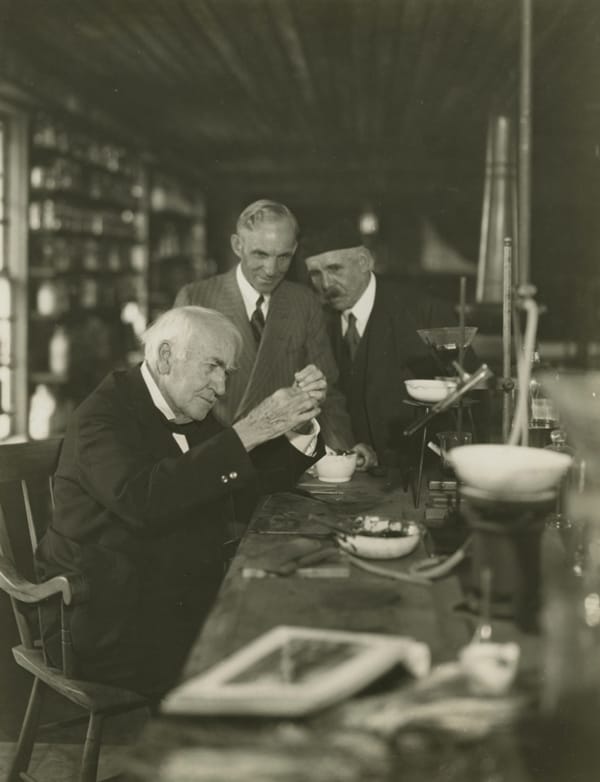
A Working Village
Henry Ford didn’t consider Greenfield Village finished upon opening. He continued to select homes, mills, and shops that he felt best reflected the way Americans had lived and worked, or that were associated with famous people he admired. Individuals even began to offer Ford historic structures for his Village.
By the mid-1930s, several Village shops were staffed by people demonstrating traditional craft skills, including glassblowers, blacksmiths, weavers, shoemakers, and potters. Visitors to Greenfield Village not only had the pleasure of watching the craftsmen work, they could also buy samples of their hand-crafted products. Craftsmen like brick makers and sawyers supported the Village restoration efforts.
By the early 1940s, Greenfield Village had grown to over 70 buildings.
Mr. Ford dislikes mere ‘dead’ exhibitions of things; he wishes to see them in action.
 Frank Campsall
Secretary to Henry Ford, Reminiscences
Frank Campsall
Secretary to Henry Ford, Reminiscences
